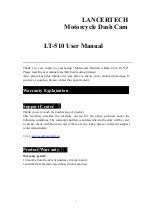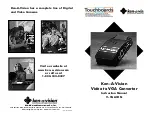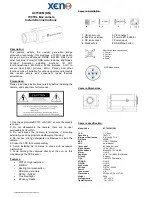
Praktica LTL Instructions for Use
– 1 –
Praktica LTL
Instructions for Use.
We are extremely pleased that you have chosen the high-quality PRAKTICA LTL, and we wish
you every success in working with this modern reflex camera.
Before using your camera, however, we would request you to study the Instructions for Use
carefully. This will help you to avoid trouble caused by wrong handling of the equipment.
The PRAKTICA LTL is a miniature single-lens reflex camera for the 24 mm × 36 mm picture
format, with automatic exposure control and internal metering to which the shutter-speed, aperture and
film-speed settings are coupled. The measuring system employed is partially integrated, the main
measuring field , about 20 mm in diameter, being arranged in the centre of the viewfinder. The result is
perfectly accurate metering since, with the most majority of subjects, the most important details of the
image are located within this area. All the subordinate marginal sections are photometrically left aside
and cannot influence the reading.
Metering is performed with the lens stopped down to taking aperture by adjusting the diaphragm
ring on the lens mount while depressing the metering key. By means of this key the circuit is closed.
All lenses having the international PRAKTICA fitting M42×1 may be used. The automatic mechanism
in the camera causes the pressure diaphragm in the lens (APD) to operate as a spring diaphragm. This
means that only during the actual moment of exposure the diaphragm closes down to the value
obtained by means of the light meter.
The novel type of metal-bladed focal-plane shutter travels across the shorter side of the frame and
has a range of speeds from 1 sec. to 1/1000 sec. It is synchronized for the use of flash bulbs and
electronic flash units. As a result of the very rapidly moving steel curtains, the electronic flash can be
synchronized at about 1/125 sec. The centre contact makes it possible to connect camera and flash unit
without using a coble.
The PRAKTICA LTL can be supplied either with or without built-in-self-timer.
The pentaprism is firmly built in, and the focusing system, due to its Fresnel lens, reveals a finder
image of maximum corner-to-corner brightness, in which also the meter needle and the readiness
indicator are visible.
Microprism screen and groundglass circle ensure quick and perfect sharp focusing. In combination
with its wide range of accessories, the PRAKTICA LTL may be employed for a great variety of
special photographic activities.


































